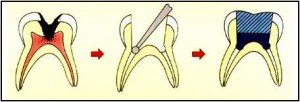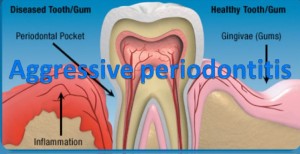Autism affects about 1 or 2 people in every thousand and is three to four times more common in boys than girls. Dental management for children with autism will vary from normal due to their special condition. Continue reading
Lasers In Dentistry Part 1
Introduction
Lasers used in dentistry are engineered and designed to perform special functions without changing or damaging the surrounding tissues or materials.
History
The functioning of a laser goes back to Albert Einstein’s quantum theory of radiation and includes other theories that help explain the local tissue damage. The first laser was demonstrated in 1960. It was ruby laser, 694nm wavelength. Interest in the medical implications of laser light was high and already in 1967 , some of the first reports appeared on the effects of very low doses of ruby light on biological tissues. In animal studies, it was observed that experimental wounds healed better if irradiated and that even the shaved fur of the experimental animals reappeared faster in the irradiated areas. There appeared to be a biological window for the dose. If too low, there was no effect, if too high there was a suprresive effect. Not much later, the Helium-Neon laser was introduced in research and the results were similar. Later on, diode lasers were introduced and they provide the same results, although some wavelengths appeared to be better for certain indications. In particular, the introduction of infrared lasers improved the optical penetration of the ligh, reaching deeper lying tissues. The first commercially available lasers in the early 80’s were extremely low powered, below 1mW was used, in spite of the fact that the first scientific reports used 25 mW. This partly explains the initial contoversy about therapeutic dosage to be used. With the rapid developement of laser diodes, the powers of therapeutic lasers have changed dramastically and diode lasers today are typically in the range of 50-500 mW. Increased power has not only shortened the treatment time but also improved the therapeutic results.
Non Carious/Decayed Lesion
1.Attrition
2.Abrasion
3.Erosion
4.Abfraction lesions
5.Localized non-hereditary Enamel Hypoplasia
6.Localized non-hereditary Enamel Hypocalcification
7.Localized non-hereditary Dentin Hypoplasia
8.Localized non-hereditary Dentin Hypocalcification
9.Discolorations
10.Malformations
11.Amelogenesis imperfecta
12.Dentinogenesis imperfecta
13.Trauma
Pulpotomy, Apexogenesis and Apexification Part 2
Apexogenesis
It is defined as physiological root end development and formation – (American Association of Endodontists.)
The current terminology is vital pulp therapy and is defined by (Walton and Torabinejad) as a treatment of vital pulp in an immature tooth to permit continued dentin formation and apical closure.
This is achieved by:
Indirect pulp capping
Direct pulp capping
Apical closure pulpotomy
Pulpotomy, Apexogenesis and Apexification Part 1
Pulpotomy
Definition
Pulpotomy is defined as the amputation of damaged and inflammed vital pulp from the coronal chamber followed by placement of a medicament over the radicular pulp stumps to stimulate repair, fixation or mummification of the remaining vital radicular pulp.
– Braham & Morris 1985
Pulpotomy is defined as the surgical removal of infected coronal pulp and its objectives are preservation of the radicular pulp vitality and relief of pain.
Hall technique Part 4
4. If possible, the tooth should be dried prior to cementation, but otherwise there is no caries removal or tooth preparation of
any kind. No local anaesthetic injection is given. Continue reading
Why Are Teeth Sensitive To Cold?
Are you refraining yourself from ice cream, cold drinks, cold air in the mornings when you breathe through your mouth causing a jolt to your teeth and forcing you to stay indoors? Even biting on a candy is causingpressure to your tooth? The answer is simple, you are suffering from sensitive teeth. Wondering how did all this happen? It could be due to various reasons from decay to gum disease. Continue reading
Aggressive periodontitis
Gum disease is not limited to adults. Periodontitis (inflammation of the supporting tissues of the teeth or also known as the periodontium) can also occur in young people. Periodontal disease can generally be divided into different types including chronic, aggressive and necrotizing periodontal disease; with aggressive periodontitis commonly seen in the younger age group. Continue reading
Hall technique Part 3
To begin with…
A full history and clinical examination, including bitewing radiography, should be carried out. Continue reading
Hall technique part 2
The Hall technique manipulates the plaque’s environment by sealing it into the tooth, separating it from the substrates it
would normally receive from the host’s diet. The plaque may continue to receive some nutrition from pulpal perfusion, but there is good evidence that if caries is effectively sealed from the oral environment, it does not progress. Continue reading


